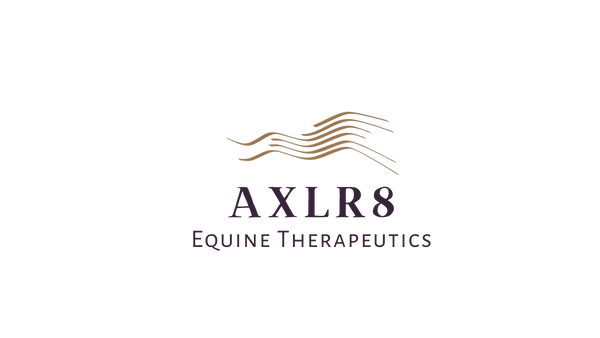
With over 700 muscles in their body, at least half of the horses' body weight is made up of muscle. For perspective - us humans have about 300 muscles in our bodies.
Muscle development is a critical aspect of a horse's performance in equestrian disciplines, contributing to their strength, agility, and overall well-being. While basic care includes exercise and a balanced diet, there are several nuances to equine muscle development that may not be widely known. In this article, we explore five aspects of muscle development for horses, shedding light on practices that can enhance their physical strength and development - which ultimately contributes to a happier athlete long term.
Pictured 2023 Australasian National Champion Large Hack Anaki Park Fernando & rider Montana Breust - prepped on our APEX Muscle & Topline Builder
Progressive Training for Strength and Endurance
Horses benefit from a training regimen that gradually increases in intensity. This is because muscle develops in the same way across all species - progressive training over time. Focusing on a combination of strength and endurance exercises is key, to include progressive overload of the muscle fibres.

Incorporate hill work, trot sets, and controlled canter exercises into your training routine. This not only develops muscle mass but also enhances cardiovascular fitness, contributing to a well-rounded and capable equine athlete
Important contraindications to this include hoof and postural balance. You will not experience appropriate muscle development if either of these things require addressing with your horse.
Variety in Exercise Routine
While a consistent exercise routine is important, horses benefit from variety, also known as "cross training". Planning diverse activities for your horse not only allows for recruitment of different major and minor muscle groups - its great enrichment for their brains! Trail riding, trot poles, in hand or ground exercises, to stimulate different muscle groups. Introducing variety is great for both horse and riders' mental health, reduces the risk of overuse injuries, and promotes a more balanced muscular development across the horse's body. We love the Ridely app for tips, tricks and pointers! Check out their segment with Ingrid Klimke for cavaletti ideas.
Proper Warm-Up and Cool-Down
Just like riders, horses require proper warm-up and cool-down routines to support their muscle development. Before engaging in any strenuous activities, start with a gentle walk to warm up the muscles and increase blood flow. After the workout, gradually decrease the intensity and finish with another relaxed walk to help the muscles cool down and prevent stiffness. Did you know it can take up to 15 minutes for joint fluid to be freely lubricating joints? Warming up in walk for at least 15 minutes is crucial to avoid strain and undue stress, while your warm down routine is important to flush lactic acid through the muscles post exercise. Your cool down routine should include walking for 10 - 15 minutes, to take advantage of the oxygen within your horses blood flow (peaked during exercise) to "flush" lactic acid out of within the muscle.
Nutritional Support for Muscle Health

Nutrition plays a vital role in your horse's muscle development. Ensure your horse receives a well-balanced diet with adequate fibre to support a healthy gut balance, and protein to support muscle growth and repair. Essential amino acids, vitamins, and minerals are also crucial for overall muscle health. Our signature Muscle & Topline Builder APEX is designed to supplement your existing base diets, with additional protein, aminos and fats. Derived from Australian Whey & Soy Protein, we have added additional Collagen support & Plasma for a superior amino profile. Our fat component of powdered coconut oil is excellent for overall health and coat condition.
Looking for more specific support? Consult with an equine nutritionist to tailor a diet that meets the specific needs of your horse's age, breed, and activity level.
Massage and Physical Therapy
In addition to exercise and nutrition, massage and physical therapy can be valuable tools for promoting muscle development and preventing injuries. "Prevention is better than a cure" has never rang so true! Professional equine massage therapists can help release tension, improve circulation, and enhance overall muscle function. Physical therapy modalities, such as stretching exercises, targeted massages, PEMF or Red Light Therapy can contribute to the horse's flexibility and well-being.
Understanding the intricacies of muscle development is crucial for horse owners aiming to optimize their equine partner's performance and well-being. Embrace a progressive training approach, introduce variety into the exercise routine, prioritize proper warm-up and cool-down, provide adequate nutritional support, and consider additional therapies like massage. By focusing on these aspects, you can contribute to the holistic muscle development of your horse, ensuring they remain strong, agile, and healthy throughout their equestrian endeavours.


